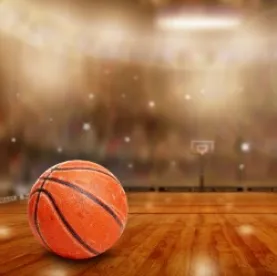On 12 March, the NBA announced its decision to suspend the current season. The COVID-19 crisis was escalating in the USA and a number of NBA stars had tested positive for the virus. It came at an unfortunate time, perhaps the most interesting period of the regular season, as teams battled for top spots and began increasing the intensity in anticipation for the playoffs. A certain Los Angeles Laker was activating “playoff mode” as the Lakers logged impressive consecutive wins over the 76ers, Bucks and Clippers.
The NBA is no stranger to seasons being suspended ad cut short. As noted in previous Sports Shorts blogs, the league enters into Collective Bargaining Agreements (CBA) with its athletes. This agreement governs how revenues are split between the parties, general rules, disciplinary measures, salary mechanisms etc. The CBA runs for a number of years and is renegotiated by the NBA and NBA Players’ Association (NBPA). If the parties do not reach agreement in time for the new season, the season does not proceed. Most recently, 2011 was the league’s fourth lockout as the 2005 CBA expired. The lockout endured for 161 days, ending on 8 December 2011. This reduced the regular season from 82 to 66 games. During the lockout, teams could not trade, sign or contact players. Also, players could not access NBA team facilities, trainers, or staffs.
What do we know so far?
The Board of Governors (which is a body made up of all 30 NBA owners) has already voted to postpone the Draft lottery and Draft combine, which were due to take place in May in Chicago. The combine is a good opportunity for teams to obtain medical information about a player so, in the absence of a combine this year, teams will need to access this information in another way.
The league is expected to permit NBA teams to reopen practice facilities for limited use imminently. However, scrimmages are forbidden and coaches are barred from attending the workouts. Players will be required to wear face marks at the facility except from when they are engaged in physical activity, according to a league memo. This follows some US states modifying state-at-home orders, which could lead to teams in some states reopening facilities before others.
What could happen?
The Board of Governors has not yet made a decision on whether to delay the NBA Draft, scheduled to take place on 25 June. This could certainly go ahead virtually, following the NFL Draft. A particular difficulty in proceeding with the Draft is that the order of teams that pick the players is governed by the final NBA regular-season standings (you can read more about the NBA Draft and lottery on Sports Shorts). Without a final regular season ranking, how will the league determine the lottery picks? Or, without a lottery, how will the order for the NBA Draft be determined?
Adrian Wojnarowski also reports that the Board of Governors is considering delaying the 2020-2021 season until December to grant sufficient time to finish the current season.
Rumours are circulating that the NBA intends on finishing the season behind-closed-doors in a sort of ‘bubble’ in one single location. The league is reportedly considering Las Vegas or Walt Disney World, Orlando, to host the rest of the season. However, this route has been criticised because it would separate players and coaches from their families for, perhaps, months. This route would also involve significant testing to ensure that individuals are healthy and that the virus is not present. Robotic cameras may be used to grant fans closer angles of the action whilst television analysts could provide their punditry remotely.
If the season does not go ahead, then player salaries may be forfeited under the force majeure clause in the current CBA. According to Adam Silver, the existing CBA is not “built for an extended pandemic”. As such, it may be necessary to terminate the CBA and enter into a new CBA that is responsive to the ongoing pandemic. The current CBA affords the NBA a right to terminate the CBA for force majeure. The termination right must be triggered within two months of the force majeure event occurring. ESPN confirmed that the NBA and NBPA have agreed to extend this window until September.
A new CBA would be designed to address certain issues relating to the pandemic. For example, a number of player contracts expire on 30 June, marking the commencement of NBA free agency, enabling players whose contracts expire on this date to enter into negotiations with other teams. It would be chaotic if player contracts expired in line with this current timeline and potentially before the season finishes. A new CBA could extend existing player contracts to the end of the season (whenever that is), reorganise the NBA Draft (and related matters) and adjust salary caps for the teams. This could also reassess the revenue split between the league and the players. Revenue decreases will likely bring the salary cap down, meaning a number of teams with existing players on lucrative contracts will probably be at greater risk of breaching past the cap and being required to pay luxury tax.
For now, the league does not seem rushed to make any decisions and prefers to wait and see how things develop.




 />i
/>i

